Natural pools and Swimming holes in Ikaria ☺️
Δημοσιεύθηκε: 11 Ιουλίου, 2023 | Συντάκτης: Eleni | Filed under: choses vécues, exploring, hiking, ikaria, pleasure, Uncategorized | Tags: adventure, aegean, angels' pools, blog review, enviro-lore, explorers, freedom, Google maps, Greece, hiking trails, χάρτης, Ικαρία, αγγελολιβάδες, μονοπάτια, map, nakedness, natural pools, vathres, waters, wild swimming | 10 Σχόλια.Hello readers! ☺️
This is actually a long promised reblog of a popular article written by my dear friend Nana in June 2016. However, while the photos are on topic, the article itself is more abstract than you would expect judging from a title like «Swimming Holes in Ikaria». Because Nana, after some brainstorming on things that she eventually didn’t write about, decides to talk about wild swimming but only about the theory behind the activity. Everybody yells «Come on, give us the spots!» but no, Nana feels that people should first, before and above everything, understand the concept!
Well, that’s my friend! That’s why I love her! ❤️
So she goes and finds a famous book on the culture of wild swimming in natural settings worldwide and she translates in Greek several passages. I think it’s worth to visit her article and read them.
But hey! That wasn’t the reason I am rebloging! The reason is that seven years after that post, that is six days ago, a friend appeared with an amazing detailed map of all known and unknown natural pools and swimming holes of Ikaria!
Isn’t that wonderful! ❤️ ☺️
Now I’m shutting my big mouth and saying no more. I’ll just embed the map and copy below its introductory note. If you are not familiar with Google maps, you should know that there are descriptions, directions and photos inside each pin and that map contains about forty! Worth checking them out – even out of curiocity, just to admire the size of the work!
Inspired and motivated by an old aritcle in Greek by my friend Nana I have added some pins on the map of Ikaria on Google to indicate the best natural river pools of the island for enjoying nature, swimming or just chilling. Don’t take this map too seriously. It’s only a trivial attempt. 😉
🔴 Beware: not all of these locations are easily accessible and it’s not always certain that there will be water there as late as midsummer.
🔴 Don’t hold me responsible for any injuries while searching for these locations. We are talking about a very rough terrain and calculating distances and times while wandering inside these ravines can be very tricky.
🔴 Don’t get involved into these adventures alone and without a reliable smartphone with good connection and GPS facility.
🔴 I also suggest you carry a map of the island. I recommend the new hiking map of ANAVASSI Editions available also in digital form.
🔴 English edition: https://anavasi.gr/Ikaria-map-eng
🔴 Greek edition: https://anavasi.gr/Ikaria-chartis-gr
🚯 DO NOT LITTER
🧴 DO NOT POLLUTE
⛺ DO NOT OCCUPY
🔥 DO NOT LIGHT FIRE
In case of emergency:
Fire Station and Rescue Team in Agios Kirikos: TEL 2275022784
Fire Station and Rescue Team in Rahes: TEL 2275041045
Thanks ‘Love Ikaria’!
That’s all from me this summer!
Be active, be safe and enjoy!.
Eleni Ik.
Γύρισα από τη Λέσβο πολύ κουρασμένη όπως και τις προηγούμενες φορές και ευτυχώς εδώ τα βρήκα όλα ήρεμα και πολύ αγροτικά. Παρόλα αυτά είμαι ακόμα ταραγμένη γι’ αυτό σκεφτόμουν π.χ. να γράψω για θέματα αρχαία και αλλόκοτα όπως α
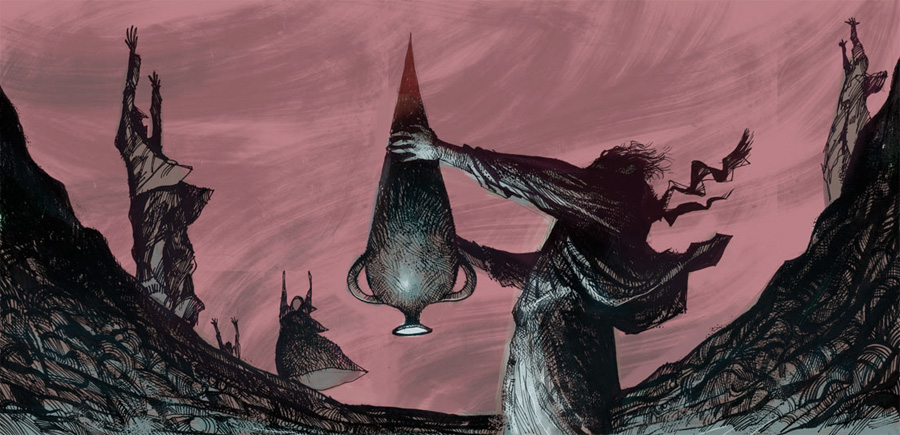 ς πούμε τα ΑΝΕΜΟΤΑΦΙΑ ΤΗΣ ΙΚΑΡΙΑΣ που ήταν ένα μαγικό εθιμικό που έθαβαν τους ανέμους που έκαναν ζημιές και που γι’ αυτό το
ς πούμε τα ΑΝΕΜΟΤΑΦΙΑ ΤΗΣ ΙΚΑΡΙΑΣ που ήταν ένα μαγικό εθιμικό που έθαβαν τους ανέμους που έκαναν ζημιές και που γι’ αυτό το 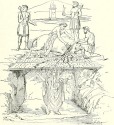 εθιμικό βρήκα εδώ ένα καταπληκτικό καρτούν.
εθιμικό βρήκα εδώ ένα καταπληκτικό καρτούν.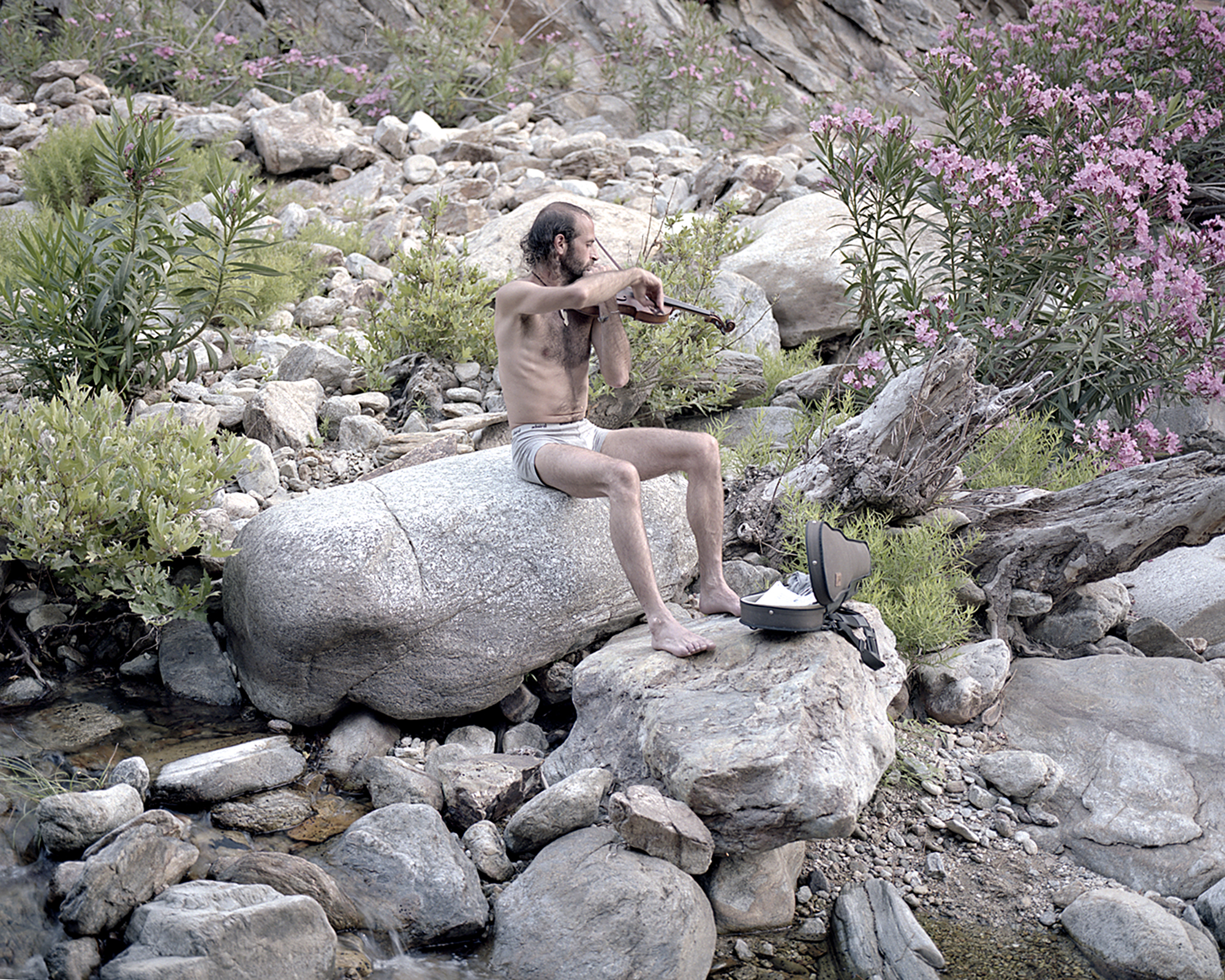 ‘Η να έγραφα για κάτι πιο σημερινό, π.χ. τους ρομαντικούς «αγριάνθρωπους» που πότε-πότε συναντά κανείς στην Ικαρία όπως τους φωτογράφησε και έγραψε γι’ αυτούς ένας που το έψαξε το θέμα…
‘Η να έγραφα για κάτι πιο σημερινό, π.χ. τους ρομαντικούς «αγριάνθρωπους» που πότε-πότε συναντά κανείς στην Ικαρία όπως τους φωτογράφησε και έγραψε γι’ αυτούς ένας που το έψαξε το θέμα…Δείτε την αρχική δημοσίευση 755 επιπλέον λέξεις
Glaciers, marbles and turbines
Δημοσιεύθηκε: 23 Οκτωβρίου, 2019 | Συντάκτης: Eleni | Filed under: choses vécues, exploring, hiking, ikaria, photography, stories, travel, Uncategorized | Tags: desertification, dig-dig-dig, eleni-in-ikaria, enviro-lore, environment, geology, Google maps, Greece, hiking, hiking map, hiking trails, ikaria, Αθέρας, ΒΑΠΕ, Ορειβατικός Πεζοπορικός Σύλλογος Ικαρίας, ανεμογεννήτριες, ικαρία, μονοπάτια, landscapes, landscapes of others, natura2000, OPS Ikarias, preservation, Save Atheras, Save Pramnos, wind turbines | 24 Σχόλια.
Dear readers
As I started this article, my intention was to present to the world the aestetic and environmental value of the limestone surfaces, crests and cliffs in a very special part of «Atheras», the ridge which makes the backbone of my island, Ikaria. This part is called «Pounta», a hellenized Italian word used by old seamen to describe a sticking out edge or protrusion of rocks like a promontory into the sea.
But after writing a few words, I changed my mind. I had to change my approach on the subject. You see, the landscape of Pounta is not at all «beautiful» in the common understanding of the word. Nor is the environmental value of this endless succession of barren, fragmented and cragged surfaces an easy thing to explain to a broad public. You see (again), along the irregular leaning pyramids of Pounta there is no water and none but very few weather beaten trees, the vegetation being restricted to thorny spurges of all kinds and sizes growing in the gaps between the limestone slabs.
It’s a nothingness, an emptiness, an inhospitable rocky wilderness.
But on the other hand, it’s one of the most impressive (read, majestic) landscapes I’ve seen in my life.
I’ve read that otherworldly landscapes like this were shaped by the movement of ancient glaciers. I can understand that for mt Olympus, but glaciers in Ikaria?! Glaciers in the Aegean Sea?! Well, if you want my opinion, I prefer this explanation than no explanation at all. After all, we had dwarf mammoths and rhinos 50.000 years ago. Why couldn’t we have had glaciers as well?
Anyway, my point here isn’t hard science. My point is the effect these landscapes can have to the soul of the traveller -in this case, the hiker.
I’ve already written about it when I blogged on a similarly dramatic landscape in another side of the island. It was one of the most destitude and wildest places I know, but – oh my God! – so spectacular! There I experienced strong feelings of anchoritism, like a voice calling me to escape from the worldly turmoil and settle for the rest of my life among dark hanging rocks on one side and the blue immensity on the other.
Now, as I crossed Pounta for the first time (that was in 2006) I experienced a similar, though somehow different feeling. It wasn’t about God; it was about me, as a human being. I felt brave and I felt strong and I felt persistent and decisive. Especially when few years a fter I tried the crossing again and the weather – as it usually happens up there – switched to gale and blew upon us thick blankets of vapor and dence sheets of fog.
fter I tried the crossing again and the weather – as it usually happens up there – switched to gale and blew upon us thick blankets of vapor and dence sheets of fog.
In one word, I felt indomitable. 🐲
.
.
I love all the wild untamable landscapes of my island. By challenging my fears and reservations, they have strengthened my character through the years and helped me evolve to a more self-confident and more independent person.
However, in spite of their timeless, unshakeable appearance, limestone crests and cliffs like Pounta are very complicated and extremel y fragile landscapes. Human activities of a gigantic industrial scale, such as the rumored installation of 110 mega-size wind turbines, would totally anihilate their actual high quality. An industrial eolian plant on mt Atheras would devastate Pounta. The prodigious ammount of excavations needed to install these monsters will sooner than later turn its proud crests to mere piles of gravel – piles of gravel rolling and dropping on our heads!
y fragile landscapes. Human activities of a gigantic industrial scale, such as the rumored installation of 110 mega-size wind turbines, would totally anihilate their actual high quality. An industrial eolian plant on mt Atheras would devastate Pounta. The prodigious ammount of excavations needed to install these monsters will sooner than later turn its proud crests to mere piles of gravel – piles of gravel rolling and dropping on our heads!
But enough with words. Just below you can see a choice of photos from a recent hiking day trip across the limestone crests of Pounta taken by my friends the OPS Ikarians.
I chose them from 1) Flickr, 2) Google, an d 3) the photos contained in the Google map of the hike. If you like this visual evidence and therefore, you think like me that this very special landscape should stay untouched by capitalist piracy, please consider signing the petition! 📜
d 3) the photos contained in the Google map of the hike. If you like this visual evidence and therefore, you think like me that this very special landscape should stay untouched by capitalist piracy, please consider signing the petition! 📜
.
…..
.
Afterword: This was eventually one more article about the landscapes of Ikaria with a stress on the mountainous nature of the island. I wonder when I will post another one. I do hope that I’ll do that soon, though. All I know right now is that the land is closing in for winter and everybody is picking olives …
Eleni Ik ❤
Wednesday, October 23, 2019
Κεραύνιοι λίθοι
Δημοσιεύθηκε: 30 Απριλίου, 2017 | Συντάκτης: angelosk | Filed under: exploring, ikaria, photography, stories, Uncategorized | Tags: aegean, angelos, enviro-lore, environment, flickr, greek-entries, history, ikaria, προϊστορία, Αιγαίο, Ελλάδα, Λίθινα εργαλεία, αρχαιολογία, αστροπελέκια, γεωργία, ιστορία, ικαρία, κεραύνιοι λίθοι, μανιτάρια, lifestyle, magic, prehistoric tools, prehistory, Stone Age, thunder stones | 8 Σχόλια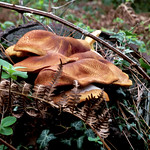 ανέβασα, γνώρισε την ίδια σχεδόν στιγμιαία δημοφιλία, μάλλον για παρόμοιους, αν και περισσότερο κατανοητούς σε μένα λόγους. Ξέρω ότι υπάρχουν εκατομμύρια μανιταρόφιλοι στον κόσμο και ότι ανάμεσά τους υπάρχουν άνθρωποι που δεν τα βλέπουν μόνο ως φαγητό, αλλά και σαν μαγικά φυτά τόσο από άποψη μορφής, όσο και για τον τρόπο που φύονται -ξαφνικά, κρυφά, ανέλπιστα- λες κι ανήκουν σε μια άλλη διάσταση, σε έναν άλλο τύπο ανάπτυξης της ζωής, πολύ διαφορετικό από των δέντρων, των θάμνων, των λουλουδιών, κτλ. Αντίθετα ωστόσο, δεν έχω ακούσει ποτέ τίποτα για
ανέβασα, γνώρισε την ίδια σχεδόν στιγμιαία δημοφιλία, μάλλον για παρόμοιους, αν και περισσότερο κατανοητούς σε μένα λόγους. Ξέρω ότι υπάρχουν εκατομμύρια μανιταρόφιλοι στον κόσμο και ότι ανάμεσά τους υπάρχουν άνθρωποι που δεν τα βλέπουν μόνο ως φαγητό, αλλά και σαν μαγικά φυτά τόσο από άποψη μορφής, όσο και για τον τρόπο που φύονται -ξαφνικά, κρυφά, ανέλπιστα- λες κι ανήκουν σε μια άλλη διάσταση, σε έναν άλλο τύπο ανάπτυξης της ζωής, πολύ διαφορετικό από των δέντρων, των θάμνων, των λουλουδιών, κτλ. Αντίθετα ωστόσο, δεν έχω ακούσει ποτέ τίποτα για  «προϊστορικούς πετρόφιλους», πόσο μάλλον όταν η φωτογραφία δεν εικονίζει κάποιο μεγαλόπρεπο ντολμέν ή μενίρ (οπότε η δημοφιλία θα ήταν κάπως δικαιολογημένη), αλλά δυο πετραδάκια που από μακριά αν τα δεις, δεν διαφέρουν από βότσαλα.
«προϊστορικούς πετρόφιλους», πόσο μάλλον όταν η φωτογραφία δεν εικονίζει κάποιο μεγαλόπρεπο ντολμέν ή μενίρ (οπότε η δημοφιλία θα ήταν κάπως δικαιολογημένη), αλλά δυο πετραδάκια που από μακριά αν τα δεις, δεν διαφέρουν από βότσαλα.
«Η λέξη «αστροπελέκι» και σπανιότερα «αστροπελέκιο» ή «αστροπέλεκο» ή «αστροπέλεκας» σημαίνει τον κεραυνό, και ειδικότερα το βλήμα του κεραυνού, που το φαντάζονται σαν πέτρινο τσεκούρι. Είναι δηλαδή, όπως δείχνει η ετυμολογία του, «ο πέλεκυς της αστραπής». Η λέξη ήταν σε χρήση κατά τον μεσαίωνα και μόνο στον Ερωτόκριτο, απ’ όσο γνωρίζω, βρίσκεται η περίφραση «πέτρα τς αστραπής», ενώ μια άλλη περίφραση είναι «του θεού το βόλι».
Όπως έχω επισημάνει και αλλού, ο λαός ξεχωρίζει το φαινόμενο της αστραπής, όπως έκαναν και οι αρχαίοι Έλληνες και οι Ρωμαίοι, σε τρία: την αστραπή, το αστροπελέκι και το μπουμπουνητό, δηλαδή την αστραπή, τον κεραυνό και τη βροντή. Το βλήμα του κεραυνού πιστεύουν ότι πέφτει στη γη ως άμορφος λίθος, και ότι ωριμάζει, δηλαδή παίρνει το σχήμα του, όταν μείνει σαράντα μέρες χωμένος μέσα στη γη.»
«Τότε αποκτά θαυμαστές δυνάμεις και γι’ αυτό το λόγο όσοι βρίσκουν τέτοια πέτρα την έχουν για φυλαχτό, καθώς πιστεύουν ότι φέρνει ευτυχία στον κάτοχό της, ότι λύνει τα μάγια και προστατεύει από κάθε κακό. Κεραύνιοι λίθοι πιστεύουν ότι είναι οι προϊστορικοί πέτρινοι πέλεκεις ή αιχμές βελών της λίθινης εποχής που βρίσκονται σε αφθονία στην Ελλάδα, ενώ μερικές φορές εκλαμβάνονται ως «αστροπελέκια» και τεμάχια χαλαζία (quartz).
Η δοξασία αυτή είναι πάρα πολύ αρχαία. Οι αρχαίοι Έλληνες θεωρούσαν την αστραπή ως πηγή γέννησης και υπέθεταν ότι αυτή παράγει τα μανιτάρια «τρούφες» και τα μαργαριτάρια. Ονόμαζαν τα αστροπελέκια «κεραύνιους λίθους» και ως τέτοιους θεωρούσαν τους προϊστορικούς λίθινους πέλεκεις ή και τους αερόλιθους. Σε αυτούς απέδιδαν τις ίδιες θαυμαστές δυνάμεις που τους αποδίδει και σήμερα ο λαός, και τους χρησιμοποιούσαν σε καθαρμούς ή τους είχαν για φυλαχτά.»
«Αυτά τα φυλαχτά πίστευαν ότι προστατεύουν επίσης από τους κεραυνούς, όπως συνάγεται από κάποιες οδηγίες που διασώθηκαν για την κατασκευή τους, ενώ στους Βυζαντινούς χρόνους τα θεωρούσαν πολύτιμα.
Κάποιοι αρχαίοι συγγραφείς επίσης παρομοίαζαν τους κεραύνιους λίθους με τσεκούρια. Φαίνεται απ’ αυτό ότι ως τέτοιους κυρίως θεωρούσαν τους προϊστορικούς λίθινους πέλεκεις.
Οι Γερμανοί επίσης ονομάζουν τους κεραύνιους λίθους «Donneraxt» (πέλεκυς της βροντής), ενώ στα πιο αρχαία χρόνια θεωρούσαν τον πέλεκυ ως σύμβολο του κεραυνού και όπλο του θεού της βροντής Thunar (Thôrr). Είναι πολύ κοινές στους Γερμανούς αυτές οι δοξασίες, έτσι ώστε, εκτός από τη λέξη Donneraxt, είναι σε χρήση κι άλλες που δηλώνουν τους κεραύνιους λίθους, όπως «Donnerstein» (λίθος βροντής), «Donnerkeil» (σφήνα βροντής) και πλήθος άλλες.
Αλλά και άλλοι λαοί της Ευρώπης, της Ασίας και της Αφρικής τιμούν τους λίθους που πιστεύουν ότι προέρχονται από τους κεραυνούς. Ως τέτοιους, εκτός από τους προϊστορικούς πέλεκεις και τα βέλη, θεωρούν και τους αερόλιθους και τα απολιθωμένα οστά προϊστορικών καλαμαριών («βελεμνίτες») τους οποίους έχουν συνδέσει με πλήθος δεισιδαιμονιών.»
Φίλη μου Ελένη, δεν έχω να προσθέσω άλλο παρά να ξαναπώ με άλλα λόγια εκείνο που έγραψα στο facebook. Τα αστροπελέκια «δεν ανήκουν σ’ αυτόν τον κόσμο». Είναι λείψανα του τρόπου ζωής της λεγόμενης «Λίθινης Εποχής» που είναι πολύ δύσκολο να κατανοήσουμε όχι μόνο εμείς, αλλά όπως φαίνεται, αφότου διαδόθηκε και επικράτησε η χρήση των μετάλλων, ξεχάστηκε και έγινε ακατανόητος ακόμα και στους αρχαίους. Είναι «αντικείμενα από άλλη διάσταση», τέτοια που ακόμα και σήμερα, παρόλες τις αδιαμφισβήτητες επιστημονικές εξηγήσεις, συνεχίζουν να εξάπτουν την φαντασία, να δημιουργούν απορίες και να κάνουν το νου μας να ταξιδεύει.
Όσον αφορά τώρα την Ικαρία, είναι πασίγνωστη και αξιοσημείωτη η αφθονία τους. Πάρα πολλά βλέπει κανείς να εκτίθενται στις αρχαιολογικές και λαογραφικές συλλογές του νησιού, αλλά και στα σπίτια ακόμα υπάρχουν πολλά. Οι παλιοί Καριώτες τα ανακάλυπταν στα πιο απίθανα σημεία στα βουνά, σε μέρη που δύσκολα μπορεί κανείς να φανταστεί ότι ζούσαν άλλοτε άνθρωποι. Τα μάζευαν και τα φύλαγαν ως μαγικά αντικείμενα, αλλά και σήμερα ακόμα τα τιμούν και τα επιδεικνύουν με σεβασμό, ως ιστορικά αντικείμενα που δηλώνουν το πόσο αρχαία είναι η παρουσία του ανθρώπου στον τόπο μας.
Και θα τελειώσω την αναφορά στα αστροπελέκια της Ικαρίας, Ελένη, με το δικό σου σχόλιο κάτω από τη φωτογραφία στο Φλικρ:
«(τα αστροπελέκια) είναι από μια εποχή που το νησί ήταν καλυμένο με δάση και αυτές οι πέτρες (οι μεγάλες στρογγυλές πέτρες που ονομάζουμε «λούρους») ήταν ακόμα χωμένες βαθιά μέσα στη γη«.
Κεραύνια Εποχή, στ’ αλήθεια, θα ήταν εκείνη!
Άγγελος Κ.
 1) Τα νεώτερα αρχαιολογικά δεδομένα για τα λίθινα εργαλεία που ονομάζουμε «αστροπελέκια» μπορεί κανείς να διαβάσει στο «Αρχαιολογία Online» στο άρθρο: Προϊστορικές τεχνικές και μέθοδοι κατεργασίας του λίθου (Μέρος A´)
1) Τα νεώτερα αρχαιολογικά δεδομένα για τα λίθινα εργαλεία που ονομάζουμε «αστροπελέκια» μπορεί κανείς να διαβάσει στο «Αρχαιολογία Online» στο άρθρο: Προϊστορικές τεχνικές και μέθοδοι κατεργασίας του λίθου (Μέρος A´)
 2) Για την αρχαία ιστορία και αρχαιολογία της Ικαρίας βλέπε το βιβλίο «Αρχαία Ικαρία» του καθηγητή Α. Παπαλά.
2) Για την αρχαία ιστορία και αρχαιολογία της Ικαρίας βλέπε το βιβλίο «Αρχαία Ικαρία» του καθηγητή Α. Παπαλά.
.
Magical things are patient
Δημοσιεύθηκε: 4 Ιανουαρίου, 2017 | Συντάκτης: Eleni | Filed under: choses vécues, exploring, festivals, flying, hiking, holidays, ikaria, photography, pleasure, stories, travel, Uncategorized | Tags: agrimi, art, blog review, dreams, enviro-lore, girls, good-conspiracy, Greece, icaria, ikaria, ikarian-enigma, inspirational, island in the aegean sea, ικαρία, modeling, modeling-for-nature, motivational, my-photos, nature, witchcraft | 4 Σχόλια~
“The universe is full of magical things patiently waiting for our wits to grow sharper.”~
~
Dear readers,
you are certainly familiar with the aforementioned quote. It’s usually credited to W.B.Yeats, however, that’s not true. The famous sentence was written by someone who was amazed when he saw for the first time through a magnifying lens the astonishing details of a beautiful wild flower! Therefore, let my blog article be for you today that magnifying lens. Through it you will be able to see some tiny beautiful details and short elusive flashes in the monotonous everyday life of our island. I’m talking about the small, rare and hidden picture instead of the big one -the one which tourism lately has turned into cliché. Let’s save ourselves from that by putting out some powerful subjective worldviews! As my friend Nana whose article I am copying here, says, this is about a…
~
«A parallel reality: a collection of special moments recorded through the years and stored in our blogs and Flickr streams, from surreal alienation to oddity, from encounters with animals to performances and improvised rituals, from riddles and witchcraft to extravagance, provocation or simple pleasurable moments and postcard-like snapshots, that’s my way to celebrate Dodecaemeron, the Greek 12 festal days of Christmas and New Year, when earth and skies merge, as they say, and daily toilers like us should stop and rest and say to themselves…»
~
~~p.s. A friend asked why these pictures aren’t uploaded to Flickr. One answer is that many of them would create unwanted activity. The main reason, however, is aesthetic. As I’m saying in a comment under my snapshot of Nana’s post on Flickr, first and foremost this thing should be seen a whole.
~
~
Cross blogging 1: Nana’s WP media
Δημοσιεύθηκε: 18 Ιουνίου, 2016 | Συντάκτης: Eleni | Filed under: choses vécues, exploring, hiking, ikaria, photography, stories | Tags: adventure, aegean, agrimi, blog review, dreams, enviro-lore, environment, girls, Greece, hiking, ikaria, inspirational, island in the aegean sea, island life, ικαρία, μονοπάτια, motivational, my-friends, nana's-wild-photo, stories | 7 ΣχόλιαHappy Summer, my friends!
 It’s not the right time of the year to post long accounts. In the summer people usually browse magazines and look at pictures. So this article is about pictures, pictures of a special kind, older or newer attachements to my friend Nana’s blog posts, that may have passed unnoticed. The same as her blog as a whole, these pictures are not touristic neither do they aim to giving information about the island. All I may say about them is that they are thrilling and they have provided inspiration to a lot of viewers, and if I may say, a bit of motivation as well, and that not only concerning Ikaria but for all similar places of the world gifted with an exciting outdoors and a culture of freedom. Before I write a full blog review, I’ll stop and just say: it’s not pictures from my beloved Flickr that I look at when I am homesick for Ikaria. I look at these pictures. And when I have time, I click on the links and I also read the articles some of which go back to several years ago.
It’s not the right time of the year to post long accounts. In the summer people usually browse magazines and look at pictures. So this article is about pictures, pictures of a special kind, older or newer attachements to my friend Nana’s blog posts, that may have passed unnoticed. The same as her blog as a whole, these pictures are not touristic neither do they aim to giving information about the island. All I may say about them is that they are thrilling and they have provided inspiration to a lot of viewers, and if I may say, a bit of motivation as well, and that not only concerning Ikaria but for all similar places of the world gifted with an exciting outdoors and a culture of freedom. Before I write a full blog review, I’ll stop and just say: it’s not pictures from my beloved Flickr that I look at when I am homesick for Ikaria. I look at these pictures. And when I have time, I click on the links and I also read the articles some of which go back to several years ago.
I encourage you to take the ride. It’s a wild ride, as wild and natural as our island. Sometimes the concept does not make sense, sometimes it does, sometimes there’s humor or doubt, puzzlement, even bewilderment. There is art and fun and yes, in some of them a visitor can find some tourist information too.
But this is not the point. The point is a strong, desicive and creative girl living and rambling in Ikaria and what she thinks about it all. Take a look yourselves and say if I am wrong.
.
 Someone just asked. Yes, of course there will be a second part and maybe more to come. Nana to agrimi’s media library from Ikaria is big!.
Someone just asked. Yes, of course there will be a second part and maybe more to come. Nana to agrimi’s media library from Ikaria is big!.

‘The Hiking Trails of Ikaria’ – illustrated interview by OPS Ikarias
Δημοσιεύθηκε: 14 Μαΐου, 2016 | Συντάκτης: Eleni | Filed under: choses vécues, exploring, hiking, ikaria, photography, pleasure, stories, travel | Tags: adventure, aegean, atheras, documentary, ecotourism, enviro-lore, good-conspiracy, Greece, hikers, hiking, hiking trails, ikaria, ikaria-in-winter, ikarians, interview, ΟΠΣ Ικαρίας, ικαρία, μονοπάτια, my-friends, OPS Ikarias, people in landscape, photo rapsody, photography, photostory, preservation | 11 Σχόλια.
You know that my blog likes interviews and this one… well, it’s a good one because it’s like a documentary! I mean that you can just stare at the photos (loads of them) streaming over the questions and answers, only that I thought that the context was interesting too, so I got into the trouble to translate the whole thing in English and then I sent it over to be added as subtitles to the video on youtube. Which video is an illustrated version of an interview to my good Ikarian friend, Angelos K., founding member and representative of the Mountain Climbing and Hiking Association of Ikaria (OPS Ikarias), by Babis Kokosis for «The Hiking Trails of Greece» a regular radio show on «The Voice of Greece», the international Greek state Radio (ERA 5). Unlike what you might have expected, the pictures do not show landscapes and trails and maps and stuff like that but people!
As the introduction goes:
«The photos showing in this video made by OPS Ikarias were taken along our various hiking trips and many other activities in the nature of Ikaria from 2008 to 2016. They are a tribute to our older and newer friends and members of the Club who walk and enjoy the island’s fascinating landscapes and take part in the club’s projects and activities. They are our inspiration and our one and only support. This video is dedicated to them!»
.
.
***Find button to turn on "subtitles". Seen best in full screen mode!
.
.
You can read my translation of Angelos’s radio interview by opening this link to OPS Ikarias Google docs. The interviewer introduces the show like this:
«Today we will visit Ikaria, an island that has managed, in spite of the growing tourist development, to maintain a big part of its cultural traditions.
The natural particularities of Ikaria are many. They are shaped by the geographical features and the position of the island in the Aegean Sea. Ikaria consists of a long mountainous mass stretching from east to west forming a ridge with heights over 1000 m. and separating the island in two sides: the northern side with mild slopes, forestlands and abundant waters, and the southern side with stony grounds and steep slopes. Therefore, it displays an impressive variety of landscapes and natural sights which the visitor can discover by following its numerous trails while getting in touch with its history and the legendary particular way of life of its inhabitants.
Let’s find out a bit more about the hiking routes of the island as well as what a hiker may encounter in them through our talk with Mr. Angelos Kalokairinos, representative of the local Hiking Club.»read more...
And if you are a Greek reader you can check out the original transcript in this link.
The video, seen best in full screen mode, it goes without saying, includes a selection of pictures from the Flickr Album: «Mountain Climbing and Hiking Club of Ikaria». I have exercised my influence 🙂 and gotten a specially coded link so you can see all the pictures -not only the public ones. So take advantage of this privilege and enjoy an amazing slideshow! But if you just like a quick view, here is the album straight out of Flickr:
⭐ ⭐ ⭐ ⭐
.
.
⭐ ⭐ ⭐ ⭐
.
I WANT MORE OPS Ikarias Videos!!!
.
[related links]
Eleni Ik

.
Ikaria, May 14 2016
[BIG DAY!]
.
What I blogged about in 2015
Δημοσιεύθηκε: 12 Ιανουαρίου, 2016 | Συντάκτης: Eleni | Filed under: choses vécues, exploring, festivals, flying, hiking, holidays, ikaria, photography, pleasure, stories, travel, Uncategorized | Tags: adventure, aegean, eleni-in-ikaria, enviro-lore, environment, Greece, hiking, ikaria, ikaria-in-winter, island in the aegean sea, ικαρία, μονοπάτια, my-friends, nature, nature-culture, photography, preservation, stories | 9 ΣχόλιαHappy New Year, my friends!
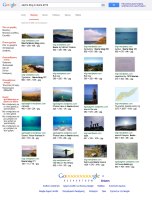 The same as last year it’s again time to review for you my blog posts of 2015. I wasn’t counting but now I can see they were actually twelve, one for every month! If you are too lazy to scroll, you can just click on the image on the left and you will be directed to Google Image Search to see a gallery of random pics from my posts of 2016. But if you like things to come one after the other, go ahead and scroll below my gaping mouth 🙂 I have set my posts in order of appearance: a book, two maps, a guiding woman, a group of friends, a cook, a craftsman and a crazy girl, a food gathering man, a survival manual, yoga in the wild, hikers in the wild, my river and me, mushrooms, and finally, amazing landscapes in winter. I hope 2016 will be as rich with good subjects as 2015. I hope,..
The same as last year it’s again time to review for you my blog posts of 2015. I wasn’t counting but now I can see they were actually twelve, one for every month! If you are too lazy to scroll, you can just click on the image on the left and you will be directed to Google Image Search to see a gallery of random pics from my posts of 2016. But if you like things to come one after the other, go ahead and scroll below my gaping mouth 🙂 I have set my posts in order of appearance: a book, two maps, a guiding woman, a group of friends, a cook, a craftsman and a crazy girl, a food gathering man, a survival manual, yoga in the wild, hikers in the wild, my river and me, mushrooms, and finally, amazing landscapes in winter. I hope 2016 will be as rich with good subjects as 2015. I hope,..
 I am in Ikaria now and it feels like in a lifeboat: heading for the unknown but safe and calm.
I am in Ikaria now and it feels like in a lifeboat: heading for the unknown but safe and calm.

Thick with the eerie awe of the uncanny
Δημοσιεύθηκε: 23 Δεκεμβρίου, 2015 | Συντάκτης: angelosk | Filed under: choses vécues, exploring, flying, hiking, ikaria, photography, stories, travel, Uncategorized | Tags: adventure, aegean, atheras, balancing rocks, enviro-lore, explorers, ghosts, good-book, Greece, ikaria, island in the aegean sea, χειμώνας, Ορειβατικός Πεζοπορικός Σύλλογος Ικαρίας, ΟΠΣ Ικαρίας, ικαρία, μονοπάτια, OPS Ikarias, Pezi, photography, rocks, Save Atheras, Save Pramnos, stories, up-with-lonely-winter, wild shots | 15 Σχόλια- .
. .
My name is Angelos K. and since I was nominated contributor I am afraid I have written very few articles in this blog. Let’s say that I was saving my blogging skills for special occasions. And as I hope you can tell from the introductory picture, this is a special occasion. The place is Pezi plateau located on the western part of Ikaria island, Greece. The time is two years ago, between December and January 2013. The photographer is Thomas K. Shor, an American writer, photographer and traveller. He and his wife Barbara appeared out of the blue in Ikaria in the middle of a cloudy and rainy winter. During their stay we hiked (a little), we talked (a lot) and we became good friends. Apparently, they liked the island, because they visited us two times. Between their visits I had the chance to read two of Thomas’s books, «A Step Away from Paradise» and «The Master Director» and although I know very little about the places where the action takes place, I liked both of them very much.
 While in Ikaria Thomas often carried a camera but I didn’t pay much attention to the fact. All Americans carry cameras. Until one day when he came to my house and showed to me a pack of high quality B/W prints. Knowing that I am a hiker and an amateur photographer, and therefore, I was familiar with the locations and the subjects, he asked for my opinion about his work. I was all admiration! As a matter of fact, I couldn’t keep my fingers off those prints! Through the years I have seen a lot of great pictures from the desolate landscapes of our mountains but these ones were special. Moreover, they were 100% «Ikaria» and not, as it so often happens, overprocessed creations which, no matter how beautiful they are, I label them «fiction» and I don’t usually give them a second glance. 😕 😕
While in Ikaria Thomas often carried a camera but I didn’t pay much attention to the fact. All Americans carry cameras. Until one day when he came to my house and showed to me a pack of high quality B/W prints. Knowing that I am a hiker and an amateur photographer, and therefore, I was familiar with the locations and the subjects, he asked for my opinion about his work. I was all admiration! As a matter of fact, I couldn’t keep my fingers off those prints! Through the years I have seen a lot of great pictures from the desolate landscapes of our mountains but these ones were special. Moreover, they were 100% «Ikaria» and not, as it so often happens, overprocessed creations which, no matter how beautiful they are, I label them «fiction» and I don’t usually give them a second glance. 😕 😕
 I immediately told Eleni about Thomas work and as much of her blog is dedicated to photography, she told me to ask for Thomas’s permission and left the door open for me to get in and post an article about his book. So I did.
I immediately told Eleni about Thomas work and as much of her blog is dedicated to photography, she told me to ask for Thomas’s permission and left the door open for me to get in and post an article about his book. So I did.
Inside Thomas’s article about his book, there is an awesome slideshow where you can view some of his many amazing photos. I borrowed the title of my article: «Thick with the eerie awe of the uncanny», from Thomas’s first draft of the publication. I loved that title! Because, like Eleni, everybody in Ikaria loves ghost stories. How couldn’t we? Just take a look at these photos! Look at the landscapes we live in! Thomas has managed to show that these shapes, these shades, these forms, are alive. More than that, they can talk and tell stories!
⭐ ⭐ ⭐
Below you can see some photos of Thomas K. Shor taken while hiking with our local hiking club, in Ikaria. Further down I have added a few quotes from his book about the island.
….:star: ⭐ :star:….
«THE ISLAND OF IKARIA is distinctive for various reasons. It remains to this day an untouristed backwater where people are largely self-sufficient and unusually independently minded. It has been labeled one of the “Blue Zones,” with the highest percentage of people in their nineties on the planet.»
«Historically, it was the poorest island in the Aegean. It is also one of the lushest, with numerous springs and rivers and forests of pine and oak.»
«Yet the landscape photographs I have been taking over the course of a couple of extended stays reflect nothing of this lushness and hardly depict any people.»
«The island is long and thin, a single mountain ridge rising sharply out of the Aegean Sea not far from the coast of Turkey. At the top of this ridge, topped by numerous 3,000 foot (1,000 meter) peaks, is a landscape that haunted and excited me from the moment I set eyes on it.»
«It is a desolate and windswept land of exposed granite carved by the elements into bizarre shapes and balancing boulders. The granite has a mysterious propensity to take the form of living beings.»
«The trees are stunted and the bushes thorny. It can change from bright sun to near impenetrable fog at such a speed as to be entirely disorienting.»
«The atmosphere is often reminiscent of the stories of Edgar Allen Poe, thick with the eerie awe of the uncanny. The beauty of the place is raw and the solitude profound. This series of photographs, taken on the mountain’s many moods, reflects both the landscape and what it did to me.»
...
Wednesday, December 24, 2015
Updated: Friday, October 26, 2018
Mushrooms!
Δημοσιεύθηκε: 8 Δεκεμβρίου, 2015 | Συντάκτης: Eleni | Filed under: choses vécues, exploring, hiking, ikaria, photography, stories | Tags: adventure, aegean, ecotourism, enviro-lore, environment, Greece, hiking, hiking club, ikaria-in-winter, χειμώνας, ικαρία, μανιτάρια, μονοπάτια, lost-village, mushrooms, my-friends, Myrsonas, nature, OPS Ikarias, preservation, up-with-lonely-winter | 5 ΣχόλιαHello friends! 🙂 🙂 🙂
 a guided group hike inside a wooded mountain ravine, looking for mushrooms and learning their names, getting to know their qualities and the big part they play in the eco-system. I am sharing this post because, like many Ikarians, I love mushrooms. I like to look for them, I like to pick them, to eat them, to talk about them, to take pictures of them -like for example, that unforgettable x-large «Parasol mushroom» (lat. «Lepiota proсеrа») from 2005 which I have picked as an introductory image. My dear readers, through the following set of pictures I hope that you will get a bit of the taste, if not of mushrooms themselves, of the magical places where mushrooms like to grow, a bit of the taste of the well-known, yet always unexplored, natural places of my island. Enjoy!
a guided group hike inside a wooded mountain ravine, looking for mushrooms and learning their names, getting to know their qualities and the big part they play in the eco-system. I am sharing this post because, like many Ikarians, I love mushrooms. I like to look for them, I like to pick them, to eat them, to talk about them, to take pictures of them -like for example, that unforgettable x-large «Parasol mushroom» (lat. «Lepiota proсеrа») from 2005 which I have picked as an introductory image. My dear readers, through the following set of pictures I hope that you will get a bit of the taste, if not of mushrooms themselves, of the magical places where mushrooms like to grow, a bit of the taste of the well-known, yet always unexplored, natural places of my island. Enjoy! Mountain Climbing and Hiking Club of Ikaria © all rights reserved
you may join the following facebook groups:

~ ❤ ~
≅ river 2003 ≅
Δημοσιεύθηκε: 15 Οκτωβρίου, 2015 | Συντάκτης: Eleni | Filed under: choses vécues, exploring, hiking, ikaria, photography, stories, travel | Tags: 2003, canyon, Chalares, eleni-in-ikaria, enviro-lore, environment, flickr, Greece, heritage, hiking trails, hippies, ikaria, island in the aegean sea, φαράγγι, Χάλαρη, ικαρία, μονοπάτια, liquid landscapes, modeling-for-nature, my life, my-friends, natura2000, nature, Nymphs, overgrazing, photo rapsody, photostory, preservation, river, September, stories, wild shots, wild swimming | 5 Σχόλια Seeing pictures of those new girls as they went around and posed proudly in the wild nature of Ikaria last summer, I said: «Hey, young ladies! We were there long before you!» Not that -goes without saying- we were the first. We don’t claim a title which righteously belongs to the hippies. But we were the first who took photos and shared them with the world. Retracting my memories, I had even made a drafty webpage in 2004 where I described the magic of one of those places -the best in my opinion in the whole island. «Hike Chalares, canyon of my heart», was the title, if I am not mistaken. I had received critisism for that page, critisism of the kind, «You shouldn’t give out secrets» and so on. But I was sure of my step. Wonders of nature shouldn’t be kept secret. The same goes for «pockets of freedom», they shouldn’t be kept secret either. But this is not the issue today. The issue today is that, twelve years after that day of September when we walked up bravely for almost the whole length of that river, today that I am not as young and posy as I was in 2003, I am sharing again with the world some of the material stored in the poor memory card of our obsolete Casio Exilim which could contain no more than 20 hi-res shots. But first let me review a few stories about the river – the scenery where these shots where taken.
Seeing pictures of those new girls as they went around and posed proudly in the wild nature of Ikaria last summer, I said: «Hey, young ladies! We were there long before you!» Not that -goes without saying- we were the first. We don’t claim a title which righteously belongs to the hippies. But we were the first who took photos and shared them with the world. Retracting my memories, I had even made a drafty webpage in 2004 where I described the magic of one of those places -the best in my opinion in the whole island. «Hike Chalares, canyon of my heart», was the title, if I am not mistaken. I had received critisism for that page, critisism of the kind, «You shouldn’t give out secrets» and so on. But I was sure of my step. Wonders of nature shouldn’t be kept secret. The same goes for «pockets of freedom», they shouldn’t be kept secret either. But this is not the issue today. The issue today is that, twelve years after that day of September when we walked up bravely for almost the whole length of that river, today that I am not as young and posy as I was in 2003, I am sharing again with the world some of the material stored in the poor memory card of our obsolete Casio Exilim which could contain no more than 20 hi-res shots. But first let me review a few stories about the river – the scenery where these shots where taken.
♦ ♦ ♦ As I said, in 2003 we visited the canyon to survey the location and take photos. Besides sport and fun, our purpose was to a evaluate: «Was it as beautiful as they said? And if so, what kind of threats to the environment were there?».
♦ ♦ ♦ Having proven that Chalares was an amazing place, having shown that inspite it was September, there was plenty of water and the vegetation was lush, having warned that the sides of the hills were infested by disastrous free-grazing goats, I suggested that a hiking trail was created in order to put in value the beauty of the canyon and hopefully promote its protection.
♦ ♦ ♦ My appeal was heard and in 2005 a large trail network spread in the area. In addition, the large river pool which appears in the photos below was chosen for a very interesting experiment: the construction of a small environment-friendly semipermeable dam, meant to slow down the flow of the river and give new strengh to the vegetation.
♦ ♦ ♦ But though in the coming years the canyon got to be more and more known, visited and enjoyed, the main threat to its environment was not treated. Unfortunately the goats were always there. As a matter of fact, for reasons that don’t concern this review, there were even more! As a result, exactly five years ago, in October 18, 2010, when a torrential rainfall hit the western part of the island, the overgrazed, barren and unstable sides of the lower part of the canyon collapsed. Tons of earth and rocks were carried by the water smashing the trees and wiping out all vegetation, leveling the lakes, transforming what used to be a detailed natural handiwork into a flat highway of gravel and sand.
Today is the black anniversary of that disaster. For older girls like me it is a bitter reminder that it takes much more things than just good intentions for paradise to happen. For younger girls I hope it is a lesson to be learned, I am afraid, only through experience. I am spreading my winds (which have started to turn grey) over their pretty heads and I am dedicating to them seven pictures from that blissful day of 2003 in the river when it was rich, when it was green, when it was mine. For better or worse it’s their turn now.
The following photos were heavily processed using different methods in different periods of time. In this entry, as they always should, they appear their real «order taken», which is «in order of feelings»: curiosity, worry, happiness, pride, relaxed bliss, anxiety, humility. Their titles in Flickr are different but if you move your mouse over each picture, you will be able to know which is which.
That’s all. Let the old show begin again!

![Natural pools and Swimming holes in Ikaria, a map on Google maps by Love Ikaria [Header Image opens to map]](https://live.staticflickr.com/8482/29361360700_5637aec1ba.jpg?w=500)
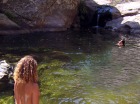

















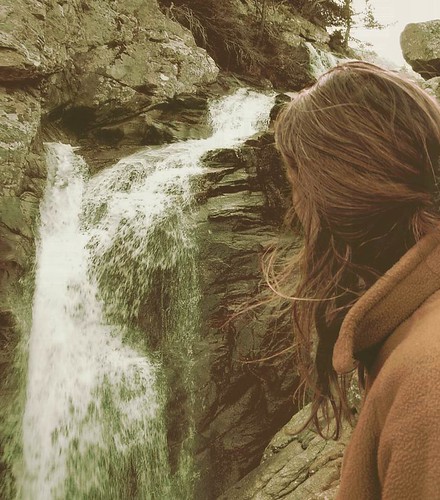
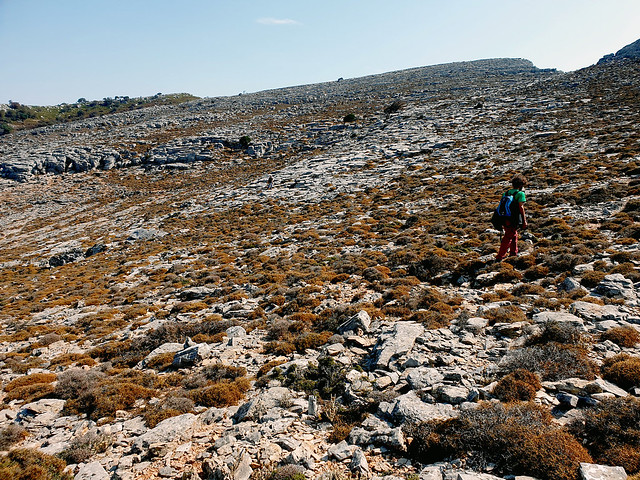

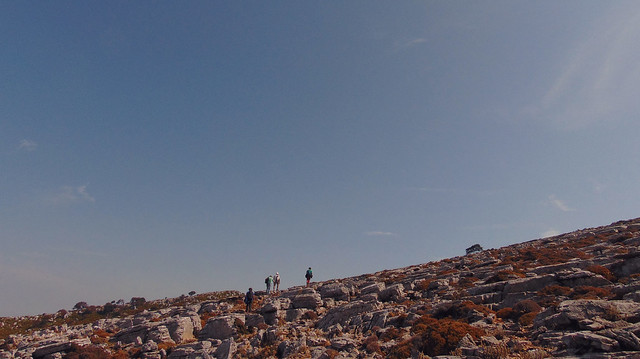

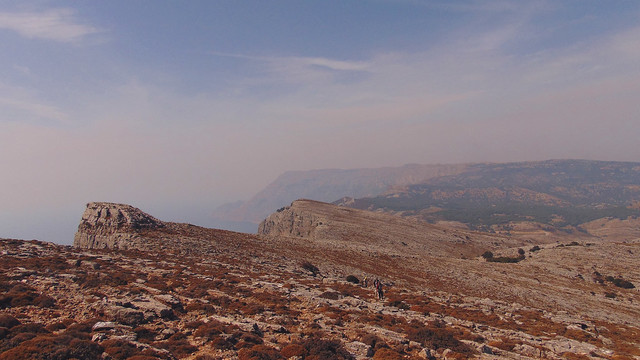

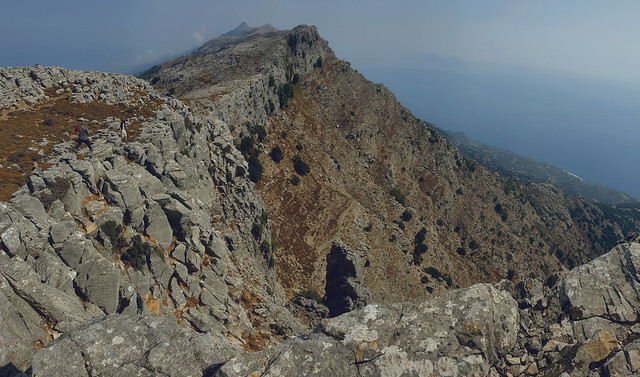
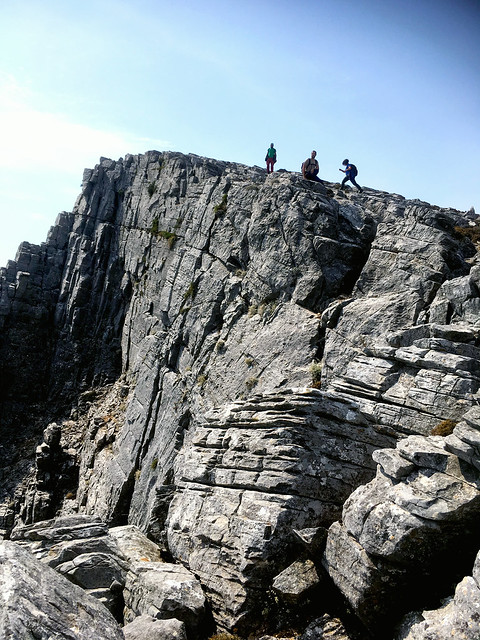



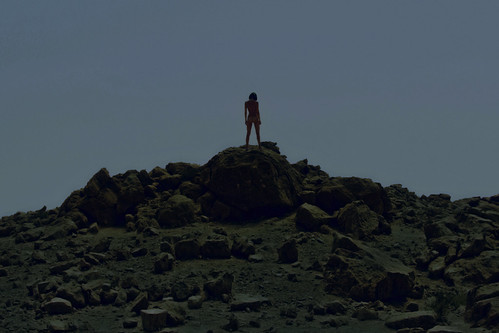

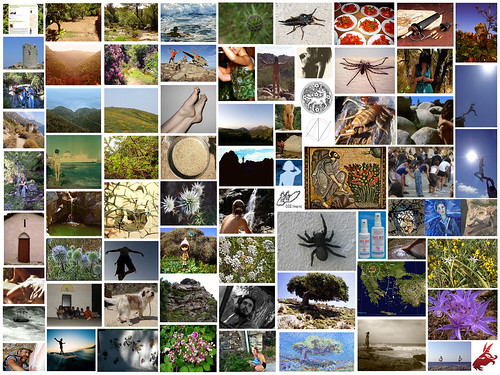
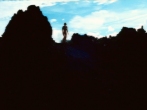
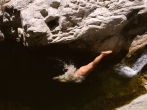
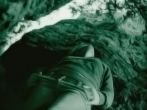

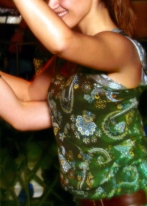
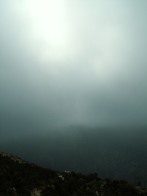



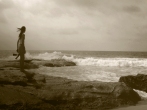
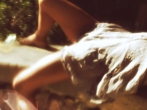
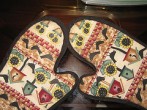
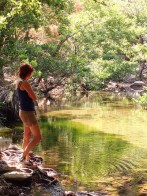

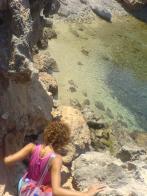


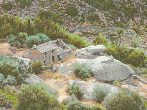
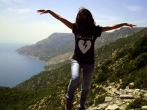

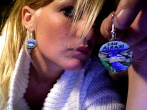
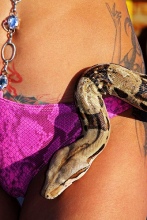
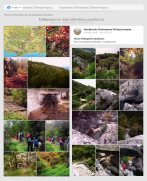
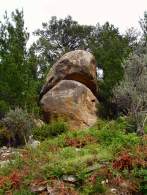
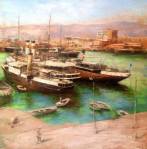
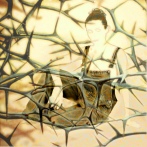
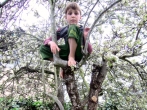
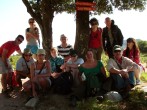
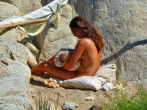


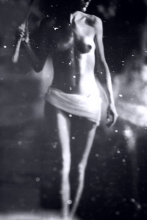
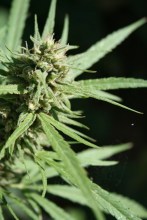
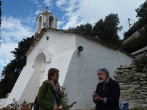
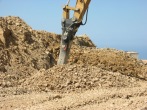




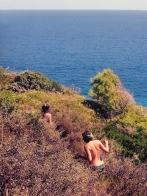
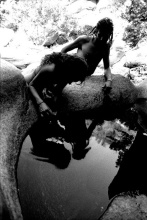


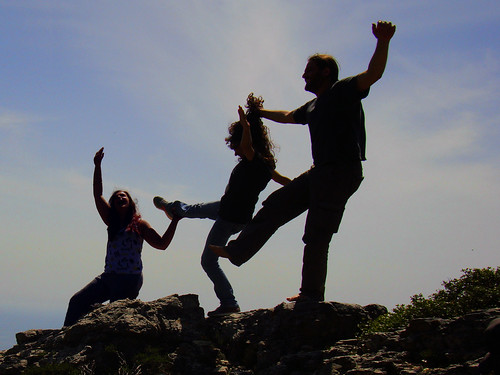





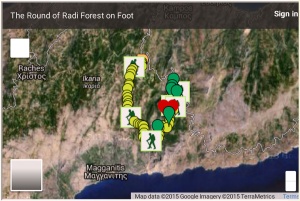
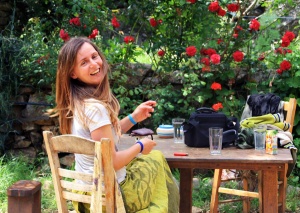
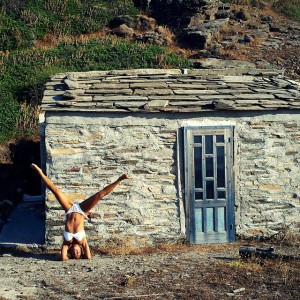






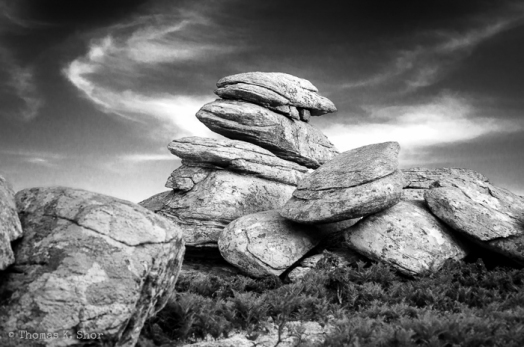




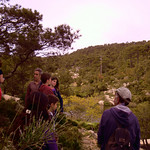




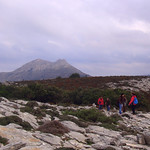
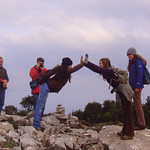
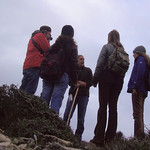
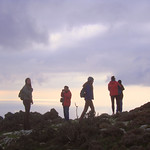



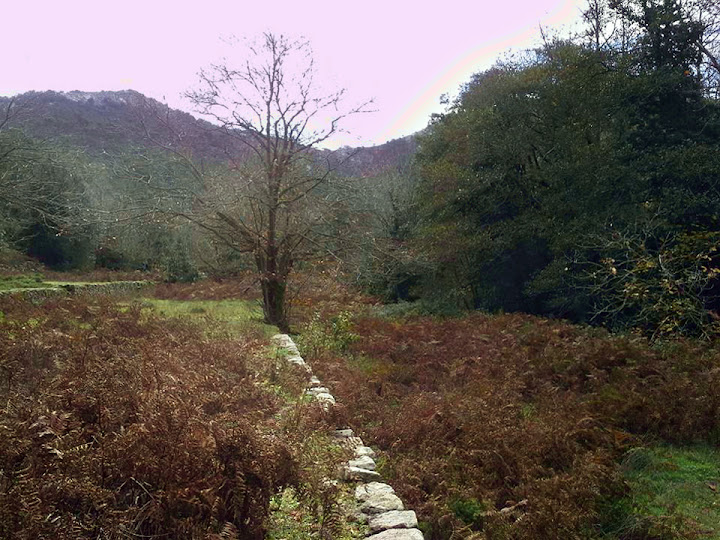
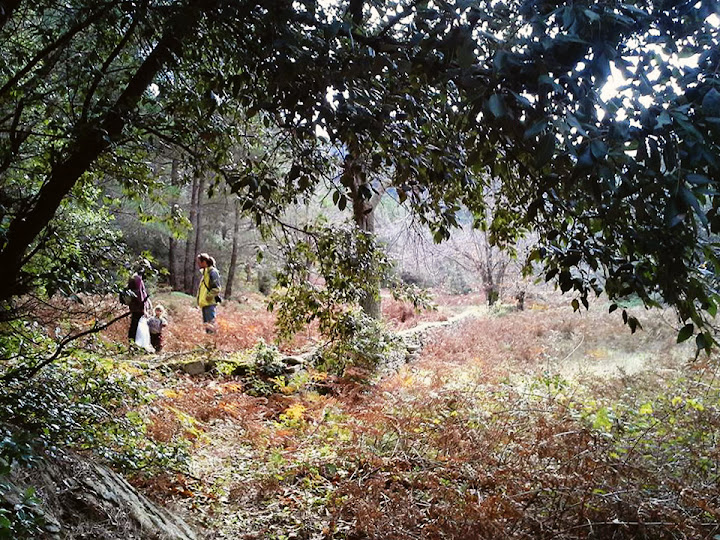
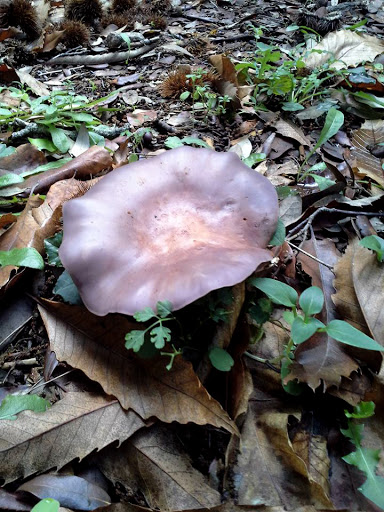
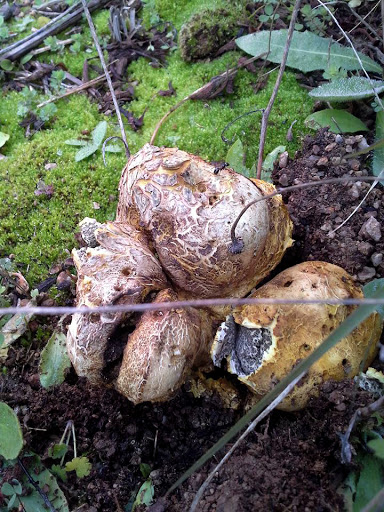
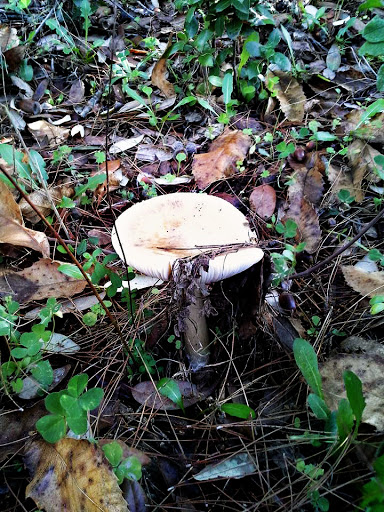
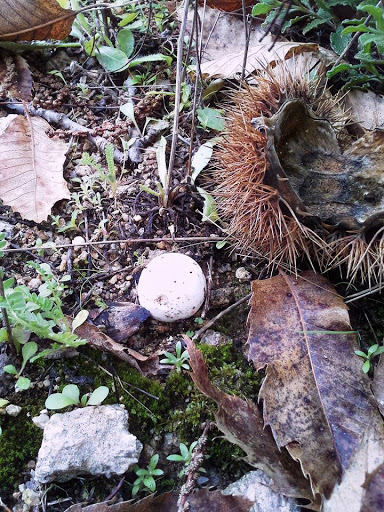
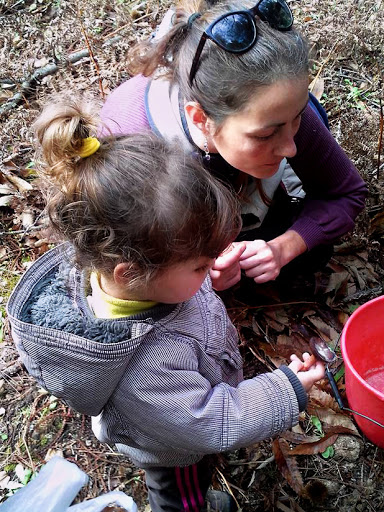
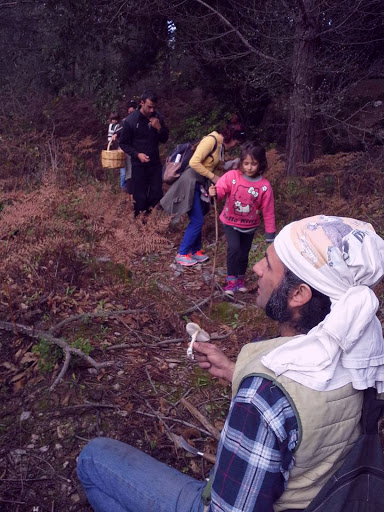
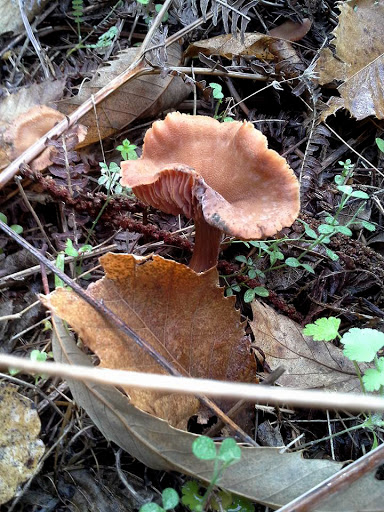

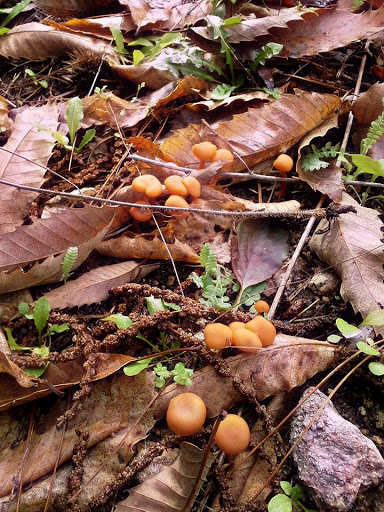
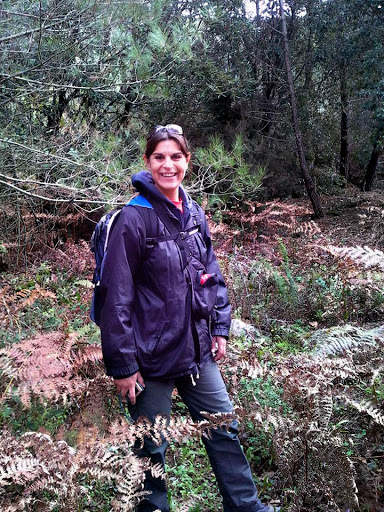
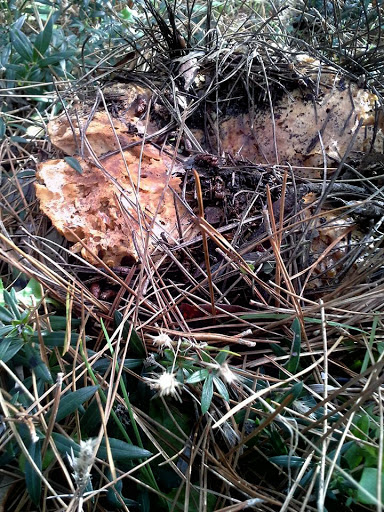
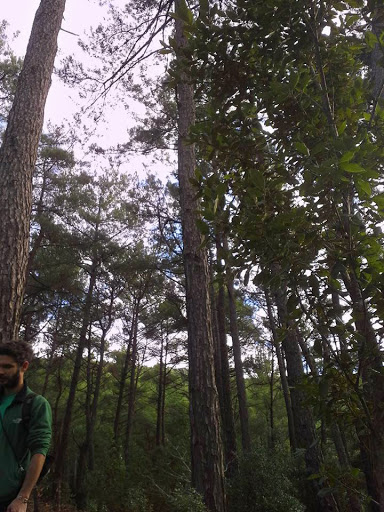
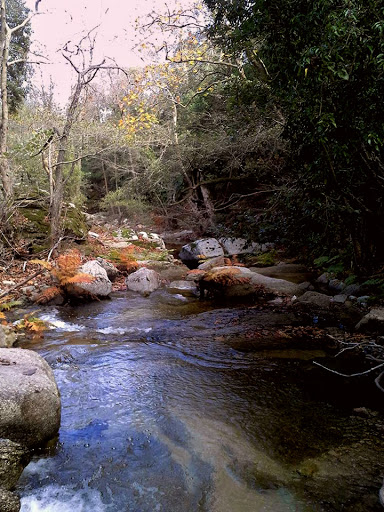
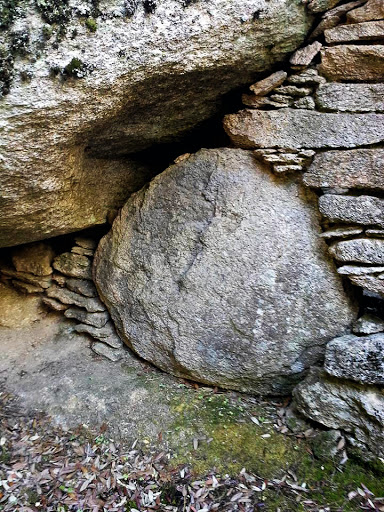
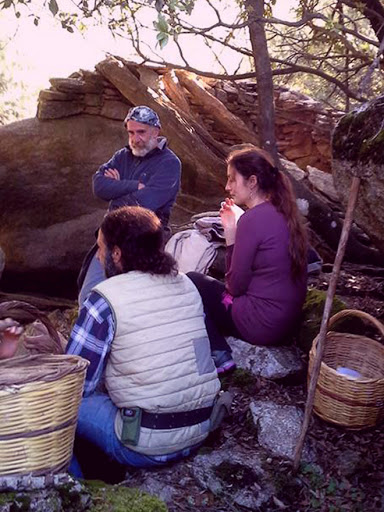

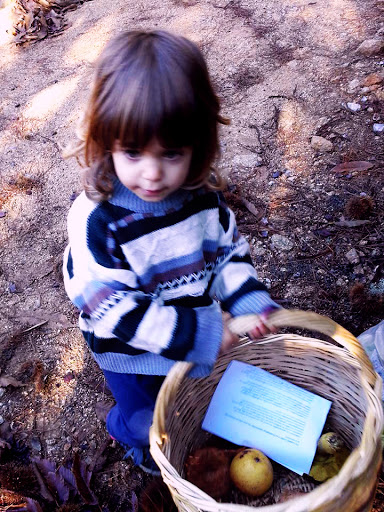



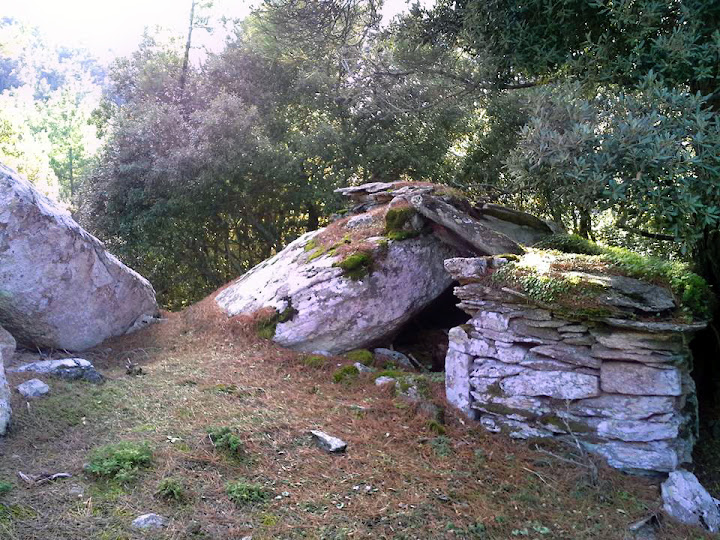
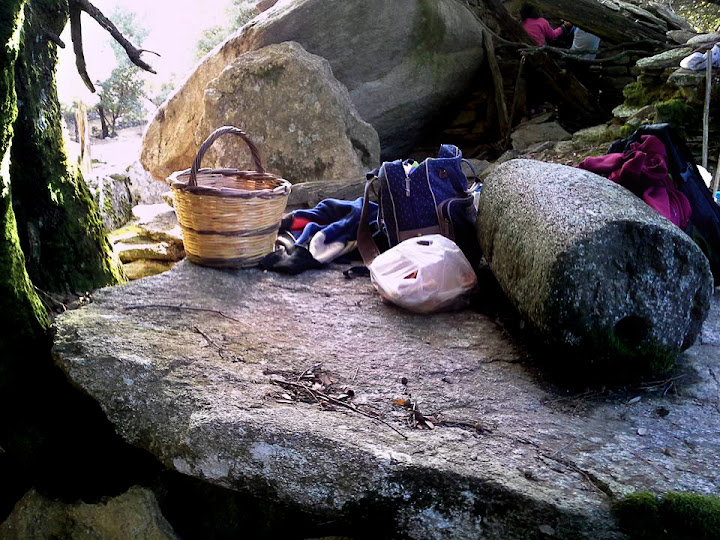
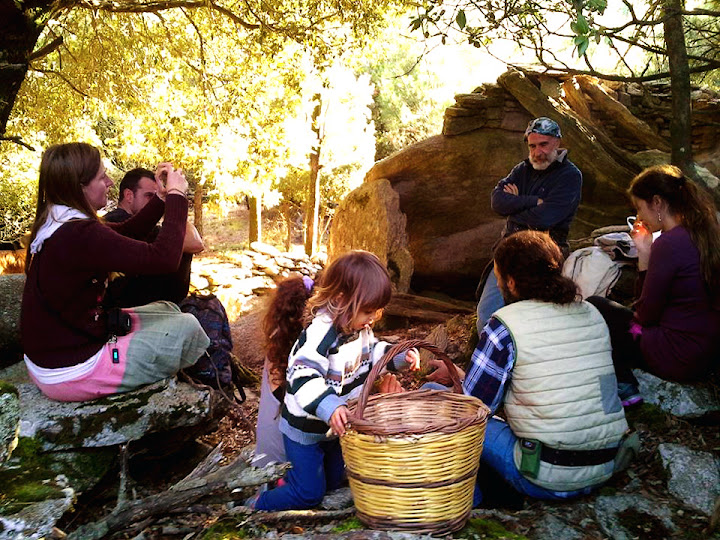
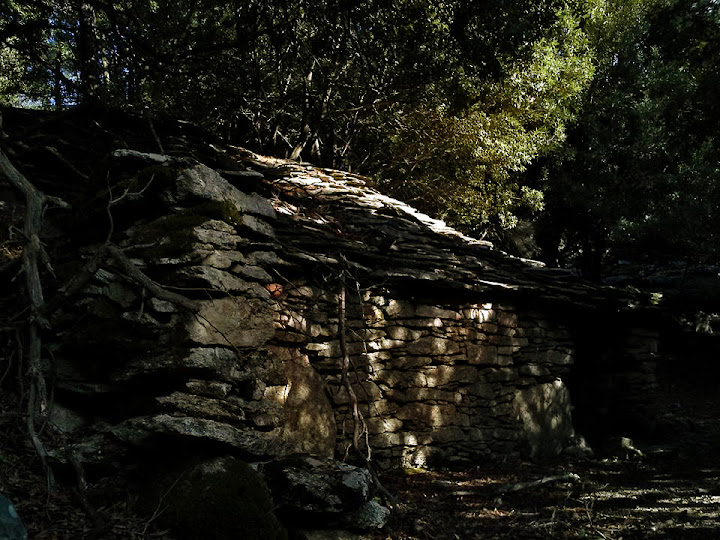
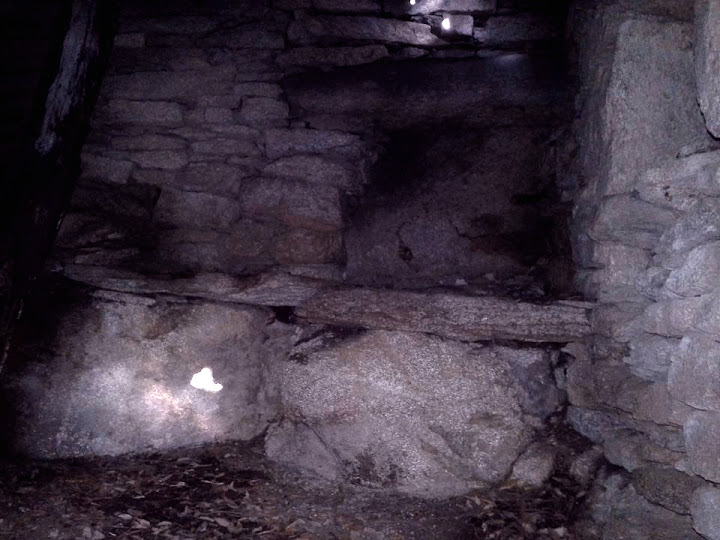



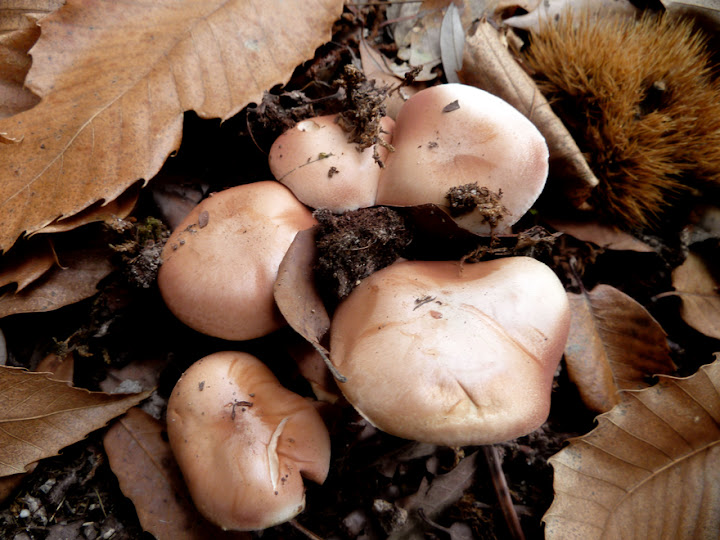
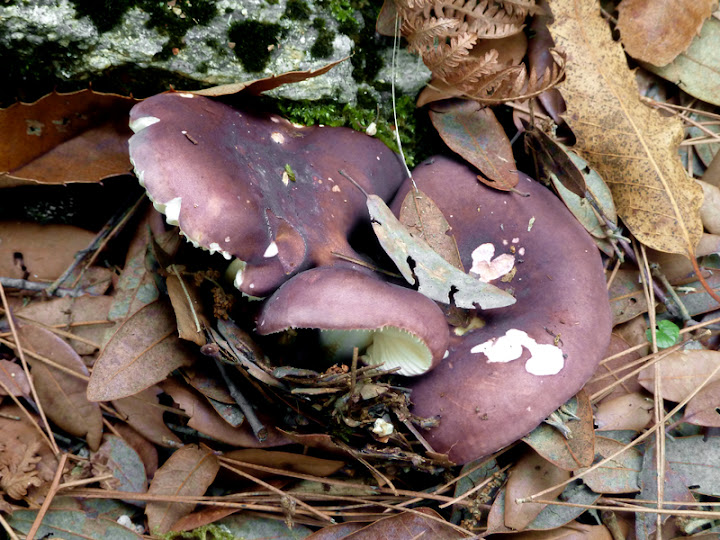

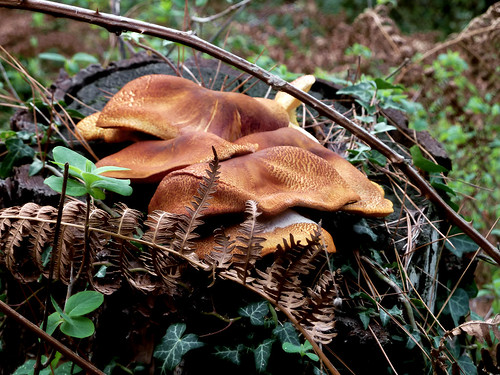








































































































Πρόσφατα σχόλια